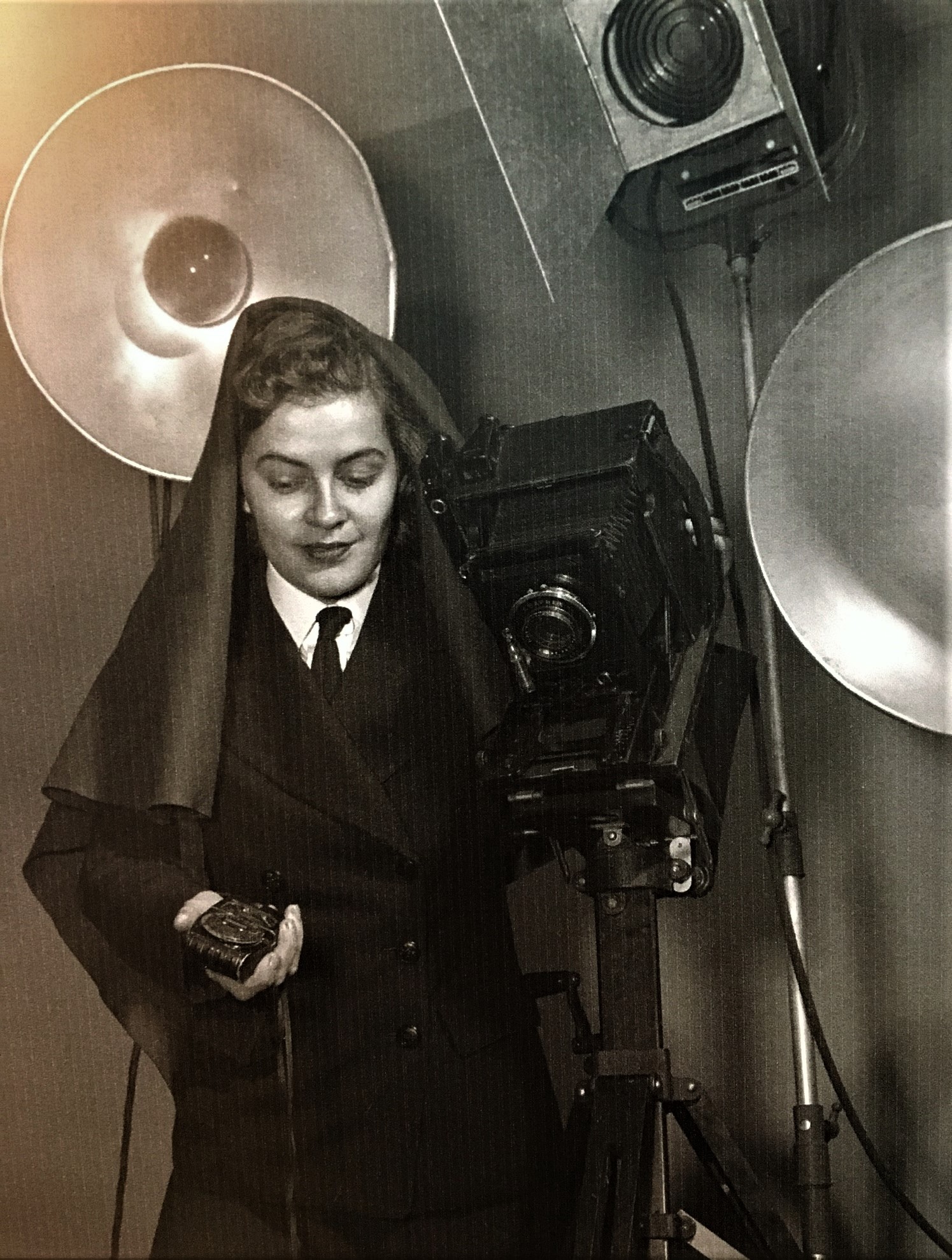From the archives: Jenny Pike breaking new ground
By Lookout Production on Nov 20, 2022 with Comments 0
Updated by CFB Esquimalt,
Naval and Military Museum
—
At the onset of the Second World War, many brave Canadian women challenged the traditions of the time and volunteered to serve their country. Jenny Pike was one of those trailblazers.
Serving as one of the first women photographers during the Second World War at only 22 years old, Jenny was responsible for processing some of the first photographs from the D-Day landings. Her passion and dedication to service helped open doors for future generations of Canadian women.
The youngest of four children, Jenny Whitehead Pike, was born in Winnipeg in 1922. As early as age 11, Jenny was sure she would become a photographer and often helped in her brother’s photo lab. Later, this experience would serve her well when she was hired to work in the photography department of Eaton’s department store.
In early 1943, with the Second World War underway, Jenny’s father helped her write a letter to the Secretary of the Naval Board offering her photography services. His support was unusual in an era when many parents disapproved of their daughters joining the Forces. There were no vacancies then, but Jenny was encouraged to join the Naval Service as a Probationary Wren.
The Women’s Royal Canadian Naval Service (WRCNS) seemed like a good life, and Jenny registered in February 1943. She trained at HMCS Conestoga in Galt, Ont., before being posted to Ottawa HQ for photo training. Jenny was one of only seven young women in the first class. From there, she went on to Halifax in October 1943, and in February 1944, she sailed in the third draft to London, England. She had been in London just four months when the D-Day invasions began.
Jenny’s proudest memory of the war was her recollecting the first photographs from the D-Day landings. They were the first pictures of the Allied onslaught to be released and were picked up by the newspaper wire services. Jenny was the only woman working in the darkroom at the time.
She returned home from England in April 1945, narrowly missing the Victory in Europe (VE Day) celebrations, to her lasting regret.
In 1949, Jenny married Chief Petty Officer Second Class Donovan Pike, a boy she had grown up with and met again when they were both discharged from the Navy. Donovan loved Navy life and, with Jenny’s encouragement, re-enlisted. The couple moved to Victoria, a city they both loved. They had two children, a son, Jim and a daughter, Susan. Donovan Pike died in 1977.
In 1969, Jenny became a darkroom technician for the Victoria City Police, finally retiring in 1983. Despite problems with her sight, Jenny continued to be an avid photographer and camera club enthusiast, always looking for the perfect shot. In the early 1980s, Pike worked as a film crew member on The Glitter Dome, providing photography and appearing as an extra in the film.
She also maintained her interest in service organizations, initially joining the Royal Canadian Legion in Winnipeg in 1946 and later transferring to Ex-Service Women’s Branch 182 in Victoria. She was President from 1982-83. She was also active in the ex-WRCNS Association of Victoria. Jenny passed away in 2004.
“Jenny was so proud to have served her country,” recalled Barbara Fosdick, former President of Ex-Service Women’s Branch 182.
“My favourite memory of her is from the recent Remembrance Day parade, when all the women were told they must march at the back of the parade. Jenny in her wrath was mighty to see,” Fosdick said. “With fists clenched, she yelled, ‘We are women veterans, we will NOT march at the back, we’re going to join the men where we belong.’ And we did.
To learn more about Jenny’s story, visit the CFB Esquimalt Naval and Military Museum, open 7 days a week from 10 a.m.–3:30 p.m. To learn more visit, wwwnavalandmilitarymuseum.org
Filed Under: Top Stories
About the Author:






